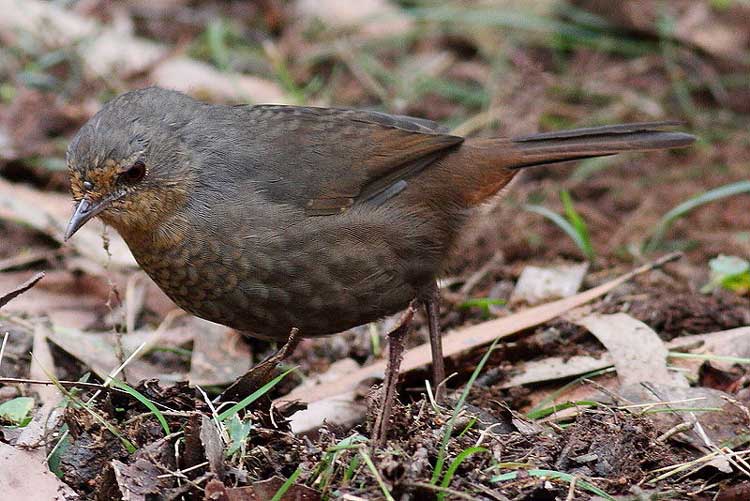
Pycnoptilus floccosus (*)
Superregnum: Eukaryota
Cladus: Unikonta
Cladus: Opisthokonta
Cladus: Holozoa
Regnum: Animalia
Subregnum: Eumetazoa
Cladus: Bilateria
Cladus: Nephrozoa
Superphylum: Deuterostomia
Phylum: Chordata
Subphylum: Vertebrata
Infraphylum: Gnathostomata
Megaclassis: Osteichthyes
Cladus: Sarcopterygii
Cladus: Rhipidistia
Cladus: Tetrapodomorpha
Cladus: Eotetrapodiformes
Cladus: Elpistostegalia
Superclassis: Tetrapoda
Cladus: Reptiliomorpha
Cladus: Amniota
Classis: Reptilia
Cladus: Eureptilia
Cladus: Romeriida
Subclassis: Diapsida
Cladus: Sauria
Infraclassis: Archosauromorpha
Cladus: Crurotarsi
Divisio: Archosauria
Cladus: Avemetatarsalia
Cladus: Ornithodira
Subtaxon: Dinosauromorpha
Cladus: Dinosauriformes
Cladus: Dracohors
Cladus: Dinosauria
Ordo: Saurischia
Cladus: Eusaurischia
Subordo: Theropoda
Cladus: Neotheropoda
Cladus: Averostra
Cladus: Tetanurae
Cladus: Avetheropoda
Cladus: Coelurosauria
Cladus: Tyrannoraptora
Cladus: Maniraptoromorpha
Cladus: Maniraptoriformes
Cladus: Maniraptora
Cladus: Pennaraptora
Cladus: Paraves
Cladus: Eumaniraptora
Cladus: Avialae
Infraclassis: Aves
Cladus: Euavialae
Cladus: Avebrevicauda
Cladus: Pygostylia
Cladus: Ornithothoraces
Cladus: Ornithuromorpha
Cladus: Carinatae
Parvclassis: Neornithes
Cohors: Neognathae
Cladus: Neoaves
Cladus: Telluraves
Cladus: Australaves
Ordo: Passeriformes
Subordo: Passeri
Infraordo: Corvida
Superfamilia: Meliphagoidea
Familia: Acanthizidae
Genus: Pycnoptilus
Species: Pycnoptilus floccosus
Subspecies: P. f. floccosus - P. f. sandilandi
Name
Pycnoptilus floccosus Gould, 1851
References
Proceedings of the Zoological Society of London (1850) Pt18 no.206 p. 95
Vernacular names
suomi: Lyyrypyrstönseuraaja
The pilotbird (Pycnoptilus floccosus) is a species of passerine bird in the family Acanthizidae. It is monotypic within the genus Pycnoptilus. The species is endemic to south-eastern Australia.
Taxonomy
The species was first described by English ornithologist John Gould in 1851. The generic name Pycnoptilus derives from the Ancient Greek pyknos 'thick' and ptilon 'feather'.[3] Its specific epithet floccosus is Late Latin for 'flocked with wool'.[3] There are two subspecies: the nominate subspecies Pycnoptilus floccosus floccosus lives in alpine areas; and P. f. sandfordi lives in lowland forest.[4][5]
Description
The pilotbird is a large, plump species of acanthizid, measuring around 18 centimetres (7.1 in) in length and weighing 27 grams (0.95 oz).[4] The plumage of the underparts is reddish-brown with scalloping on the chest and the centre of the belly speckled dull white. The upperparts are chocolate-brown.[5][6] The bill is short and finely pointed.[7] Its tail is broad and semi-erect, and flicked up and down when feeding.[5][8]
Distribution and habitat
The pilotbird is found from the Wollemi National Park and Blue Mountains National Park in New South Wales through to the Dandenong Ranges, near Melbourne in Victoria.[9] Its natural habitat is temperate wet sclerophyll forests and occasionally temperate rainforest, where there is dense undergrowth with abundant debris.[1][7] It is sedentary and common.[7]
Behaviour
Its name comes from its supposed habit of following lyrebirds, taking prey that they flush, and also from its call guiding bushmen seeking for lyrebirds.[7] This habit is well known but seldom observed. The pilotbird is highly terrestrial, feeding on or near the ground and when disturbed it runs swiftly on strong legs.[7] Its call has been described as "piercing and sweet".[8] The male makes a far-carrying call of wit-wit-weet-WHEER to which the female may respond with a softer wit-a-wit-ee.[7][8][4]
Breeding
The breeding season for the pilotbird is from August to December.[7] The globular nest is built with a side-entrance and hidden amongst the accumulated debris on the forest floor.[7] It is an untidy construction of bark, ferns, dead leaves and rootlets.[8] A clutch of usually two eggs, each measuring 27 by 20 millimetres (1.06 by 0.79 in) and varying in colour from grey-green to purple-brown, is incubated by the female for 20–22 days.[7][8] During the nestling period, which lasts 14–17 days, the male will often feed the female or help with the care of the nestlings, if the female has a subsequent brood.[4] The nests are sometimes parasitised by the fan-tailed cuckoo (Cacomantis flabelliformis).[4]
Conservation
The pilotbird is fairly common within its small range, which has reduced as a result of forest clearance and urban development, but much of its habitat is within national parks or reserves.[4] Its habitat is also threatened by climate change, severe weather and bushfires;[1] nevertheless, the most recent assessment in October 2016 classified the pilotbird as least concern on the IUCN Red List.[1]
References
BirdLife International (2016). "Pycnoptilus floccosus". IUCN Red List of Threatened Species. 2016: e.T22704513A93973392. doi:10.2305/IUCN.UK.2016-3.RLTS.T22704513A93973392.en. Retrieved 13 November 2021.
Gill F, D Donsker & P Rasmussen (Eds). 2020. IOC World Bird List (v10.2). doi : 10.14344/IOC.ML.10.2.
Jobling, James A. (2010). "Helm Dictionary of Scientific Bird-names". Retrieved 2020-04-20.
Gregory, P. (2020). "Pilotbird (Pycnoptilus floccosus), version 1.0." In Birds of the World (J. del Hoyo, A. Elliott, J. Sargatal, D. A. Christie, and E. de Juana, Editors). Cornell Lab of Ornithology, Ithaca, NY, USA. https://doi.org/10.2173/bow.pilotb1.01
Slater, Peter (1974) A Field Guide to Australian Birds: Passerines. Adelaide: Rigby. ISBN 085179813-6
Simpson, Ken, Day, N. and Trusler, P. (6th edn., 1999). Field Guide to the Birds of Australia. Ringwood, Victoria: Penguin Books Australia ISBN 067087918-5.
Morcombe, Michael (2012) Field Guide to Australian Birds. Pascal Press, Glebe, NSW. Revised edition. ISBN 978174021417-9
Pizzey, Graham; Doyle, Roy (1980) A Field Guide to the Birds of Australia. Collins Publishers, Sydney. ISBN 073222436-5
"eBird map: Pilotbird". Retrieved 2020-04-20.
Retrieved from "http://en.wikipedia.org/"
All text is available under the terms of the GNU Free Documentation License

